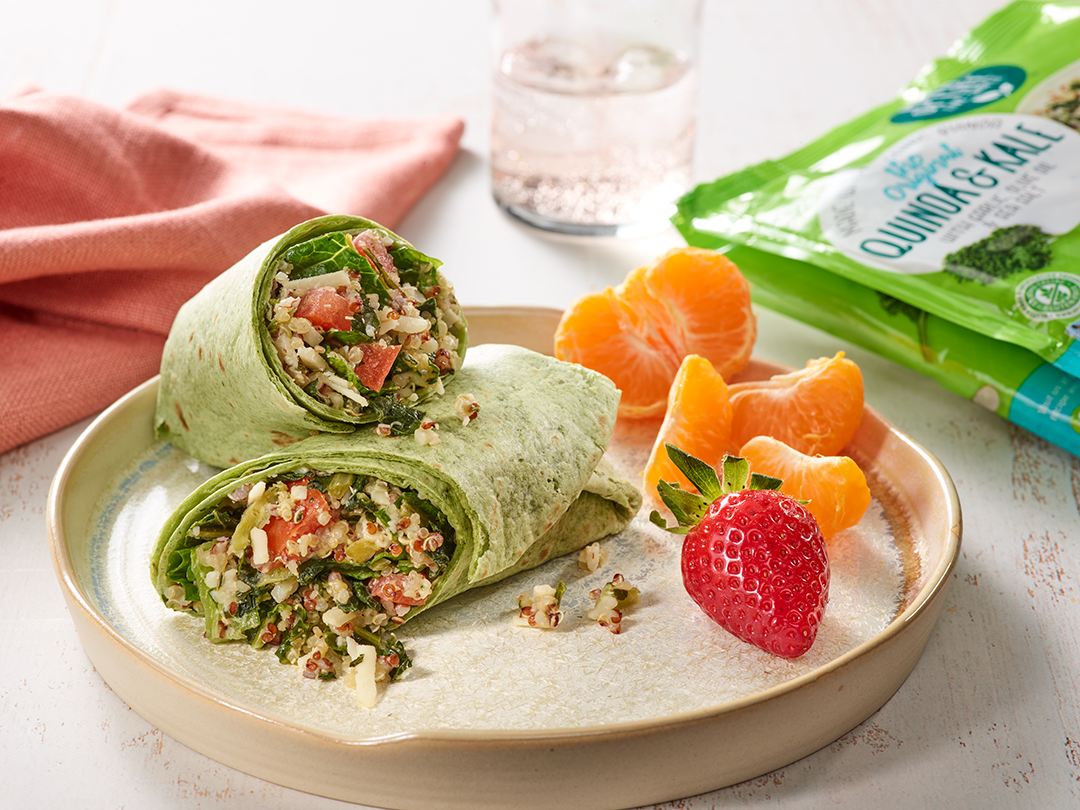People are Eating Less Veggies. Let’s Change That.

Vegetable consumption is on a decline. Here’s how to get people back to the basics with Path of Life.
Written by Leah Johnston, RDN, LDN
Every five years, the Produce for Better Health Foundation commissions The NPD Group to investigate the trends of fruit and vegetable consumption in the U.S. The results are published in a report known as the 2020 State of the Plate: America’s Fruit & Vegetable Consumption Trends. The study utilizes the National Eating Trends® (NET®) database to examine the consumption patterns of fruits, vegetables, and fruit juices and attempts to work in conjunction with the Dietary Guidelines to help inform policy and guide nutrition professionals in their practices. This year’s key takeaway: Consumption of produce is down by 10% in the last 16 years.
Key Findings
Results of the 2020 State of the Plate show good news and bad news for nutrition professionals. Consumption of fruit has remained steady over the time period, while fruit juices have declined by 8% from 2015-2020 with the greatest decline being children aged 1-3 years.

Source: 2020 State of the Plate: America’s Fruit & Vegetable Consumption Trends
Perhaps the most alarming trend noted in the report is the decreasing consumption of vegetables among kids and adults in recent years. Here are the key findings from the PBH report regarding vegetables:
- On average, vegetables are consumed 7.5 times per week.
- The average vegetable intake per eating occasion is about 1.4 cups. (This is consistent with 2020-2025 DGA’s estimate of 1.6 cups)
- Most people (95%) reported eating veggies at least once per week.
- 56% of adults say that they are making an effort to eat more veggies.
- Eating occasions have increased for three age groups (14-18, 19-30, 71+ year olds)
- Eating occasions have declined in five of the eight reported age groups:

Source: 2020 State of the Plate: America’s Fruit & Vegetable Consumption Trends
Where do we go from here?
As a Registered Dietitian, approximately 90% of my job is talking to people about how important vegetables are to their health. Because there are so few people that actually consume the recommended number of servings of vegetables, this is the number one thing I stress. Through countless programs around the country, such as MyPlate, awareness and education are on the rise, which makes this result all the more disappointing. It is proof that new strategies need to be explored to get this message to resonate with people.
The truth is that adults know that vegetables are good for their health, but education alone is not enough for behaviors to change. Our efforts need to focus on behaviors and feelings even when we are talking to people in a hospital setting. Increase the enjoyment of healthy foods by focusing on how it makes them feel — physically and mentally. An impactful RD is also part therapist. Instead of tracking everything eaten in a food journal, try a behavior tracker. Work with patients and clients to pick a few small positive behaviors to practice at a time. For example, cutting up an assortment of colorful veggies into snackable sizes and leaving the open bowl in a place that it will be seen, such as an office or coffee table. The enticing colorful veggies within the eye line will help promote consumption of a nutritious snack.
The convenience of frozen
The PBH report also noted that convenience is a major factor in the frequency of consumption. The vegetables that saw growth in eating occasions in the last five years are mostly items that are thought to be more convenient or ready for consumption: potatoes (including fries), caesar salad, tomato sauce, tomato salsa, and avocados. Based on this data, we can look to frozen foods to help fill in the gap between convenience and nutrition. In the last year, we’ve seen growth in the frozen foods category. Path of Life products are blends of vegetables and whole grains that are both flavorful and easy to prepare. Prepped in a microwave or skillet, Path of Life makes nutrient-dense meals as simple as adding a protein.
Use this formula to create fun and nutritious meals with Path of Life:
Path of Life Blend + Protein + Another Frozen Veg (optional)
Meal Examples:
The Original Quinoa & Kale Blend + Salmon & Lemon
Tuscan Quinoa Blend (with Kale, Mushrooms & White Beans) + Plant-Based Italian Sausage
(not so fried) Riced Cauliflower Blend + Scrambled eggs + Edamame
Deep Roots Quinoa Blend (with Root Veggies & Kale) + Tofu
Vegetable consumption has been on the decline since 2004 despite the efforts of nutrition professionals and government initiatives. It’s time to find new ways to focus on behaviors and address convenience as a barrier to healthy eating. Path of Life can be a resource for nutrient-dense frozen blends and easy recipes.
Find more deliciously simple recipes using Path of Life Blends on our Recipes page.

Leah Johnston is a Chicago-based Registered Dietitian with experience in a variety of settings, including nutrition counseling, clinical research, public speaking, and culinary nutrition. Leah’s goal is to empower people to take control of their health and personalize their diet by being REAL: Eat real food. Make it real easy on yourself. Knowledge-based on real science. Changes that are realistic.